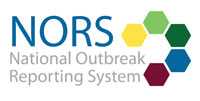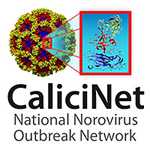Reporting and Surveillance for Norovirus
On this Page
Reporting
Currently, state, local, and territorial health departments are not required to report individual cases of norovirus illness to a national surveillance system. They may not know about such cases because most hospitals and doctor’s offices do not have capability to test for norovirus. The virus is usually diagnosed only when an outbreak happens.
Health care providers should report all outbreaks of acute gastroenteritis, including suspected outbreaks of norovirus, to the appropriate state, local or territorial health department.
Health departments are encouraged to report all suspected and confirmed norovirus outbreaks through the National Outbreak Reporting System (NORS) and CaliciNet.
Surveillance Systems
NORS
NORS was launched by CDC in 2009 to collect information on outbreaks of foodborne, waterborne, and enteric disease that spread from person-to-person, animals, environmental surfaces, and other or unknown ways. Public health agencies can report all outbreaks of gastroenteritis, including norovirus illness, through this web-based system. This information is used to determine where norovirus outbreaks commonly occur, how the virus is spread, and specific food or water sources involved. In turn, this helps with identifying the best ways to prevent and control norovirus illness and outbreaks.
CaliciNet
CaliciNet is a national norovirus outbreak surveillance network of federal, state, and local public health laboratories in the United States. CDC launched CaliciNet in 2009 to collect information on norovirus strains associated with gastroenteritis outbreaks in the United States. Public health laboratories electronically submit laboratory data, including genetic sequences of norovirus strains, and epidemiology data from norovirus outbreaks to the CaliciNet database. The norovirus strains can be compared with other strains in the database, helping CDC link outbreaks to a common source, monitor norovirus strains that are circulating, and identify newly emerging norovirus strains.
Definition of a Norovirus Outbreak
An outbreak of norovirus is defined as an occurrence of two or more similar illnesses resulting from a common exposure that is either suspected or laboratory-confirmed to be caused by norovirus.
NoroSTAT
CDC established the Norovirus Sentinel Testing and Tracking (NoroSTAT) network in August 2012. NoroSTAT is a collaborative network of nine state health departments and CDC working together to establish and maintain standard practices for norovirus outbreak reporting to CDC surveillance systems. These standards aim to improve the timeliness, completeness, and consistency of norovirus outbreak reporting. State health departments that participate in NoroSTAT promptly report specific epidemiologic and laboratory data on suspected or confirmed norovirus outbreaks to CDC. This information is used to quickly evaluate current norovirus outbreak activity, make comparisons to previous years, and assess strain-specific characteristics of norovirus outbreaks, including the impact of new strains on outbreak frequency and severity.
Other Surveillance Systems
CDC is using New Vaccine Surveillance Network (NVSN) and Foodborne Diseases Active Surveillance Network (FoodNet) to do norovirus testing on patients with gastroenteritis. This will help generate new estimates of norovirus illness and monitor trends over time.
Resources
- Updated Norovirus Outbreak Management and Disease Prevention Guidelines (2011)
- Guideline for the Prevention and Control of Norovirus Gastroenteritis Outbreaks in Healthcare Settings (2011)
- A Norovirus Outbreak Control Resource Toolkit for Healthcare Settings (2012)
- New Vaccine Surveillance Network (NVSN)
- Foodborne Diseases Active Surveillance Network (FoodNet)
- National Outbreak Reporting System (NORS)
- Estimates of Foodborne Illness in the United States
- CDC's Vessel Sanitation Program
- CDC Feature: Surveillance for Norovirus Outbreaks
- Page last reviewed: June 24, 2016
- Page last updated: December 28, 2016
- Content source:


 ShareCompartir
ShareCompartir

